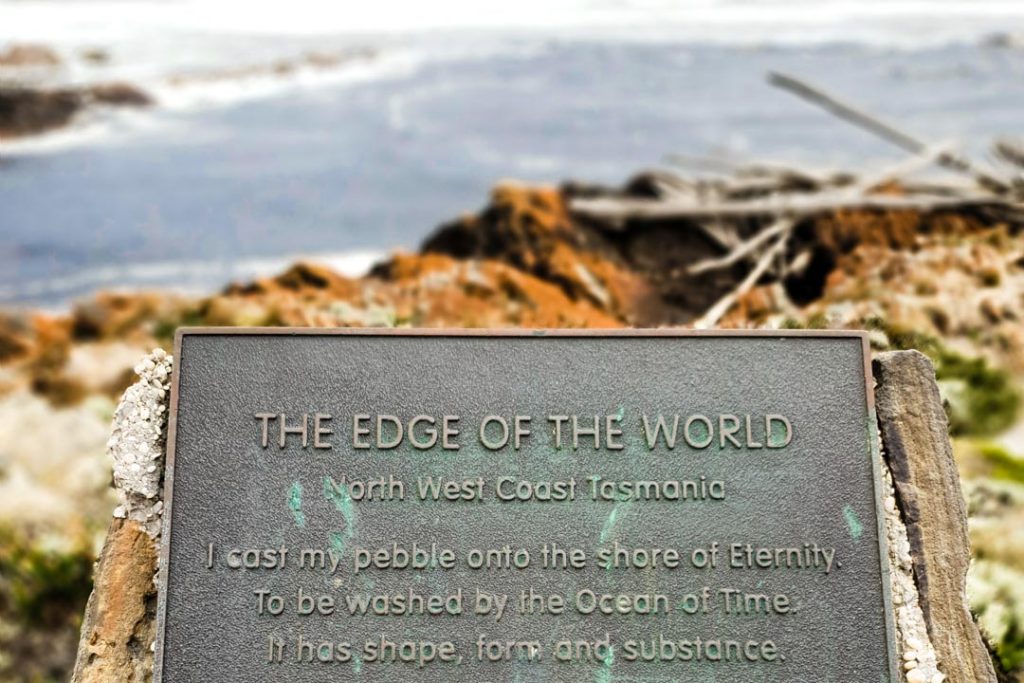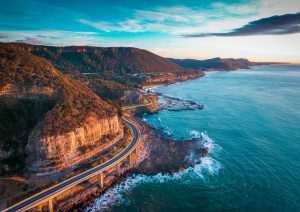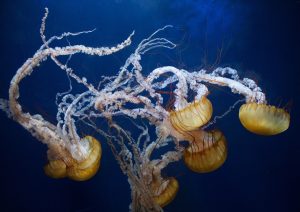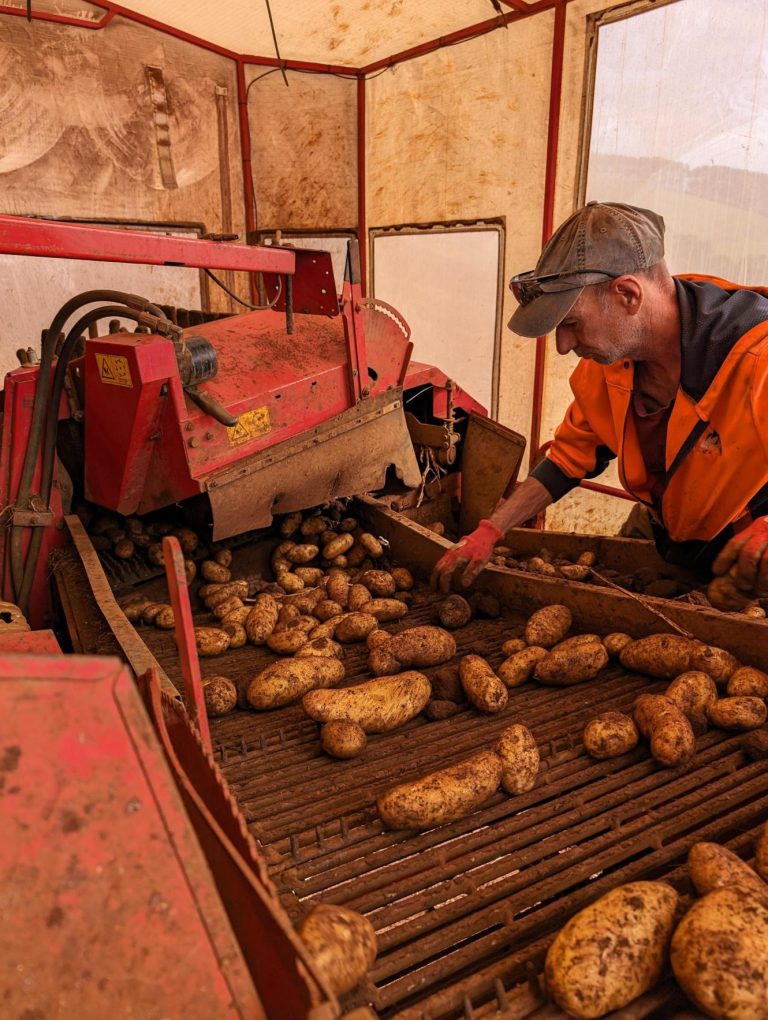Feeling a bit of wanderlust this winter? Why not lace up those boots and grab your cosiest jacket for a thrilling journey to Tasmania’s North, West and West Coast. This region is packed full of surprises, from captivating geological marvels to charming coastal hamlets and the breathtaking splendour of the wilderness. Here are six must-see locations that offer the perfect winter adventure: Devil’s Gullet, Fossil Bluff, Boat Harbour, Sisters Creek, Montezuma Falls, and the Edge of the World.
Devil’s Gullet: An Echo of Winter’s Symphony
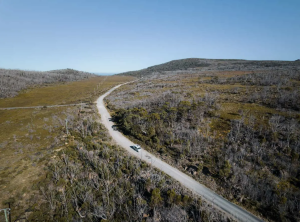


First on our list is the awe-inspiring Devil’s Gullet, a geological marvel tucked away in Tasmania’s central highlands. Getting there involves a short 10 minute, albeit steep, walk, but your efforts will be richly rewarded. You’ll arrive at a viewing platform that presents a stunning vista of a deep, narrow chasm, a relic of an ancient time when mighty glaciers carved their way through the landscape.
Devil’s Gullet forms part of the Great Western Tiers, a chain of mountain bluffs that mark the northern boundary of Tasmania’s central plateau. It is a testament to the power and majesty of natural forces. The harsh conditions, exacerbated by the altitude and exposure, create a landscape that is stark and rugged, almost resembling the barren surface of the moon. Yet, this contrasts dramatically with the verdant splendour of the forests nestled in the valley below, painting a landscape that is as beautiful as it is surreal.
But the allure of the Devil’s Gullet extends beyond its visual spectacle. As you stand on the edge of the chasm, you’ll hear the wind howling through the narrow canyon, producing an eerie, echoing sound. It’s almost as if the Earth itself is groaning, resonating from the depths of the abyss. This captivating blend of sight and sound led early explorers to christen this spot the Devil’s Gullet, imagining it as a supernatural portal to the netherworld.
Remember, Devil’s Gullet can be subject to cold, windy conditions. So be sure to wrap up warmly as you prepare to experience this natural wonder, which combines the drama of geology with the majesty of sound, and a touch of mythology. It’s an adventure that’s sure to send shivers down your spine, and not just because of the winter chill!
Fossil Bluff: Time Travel to the Ice Age
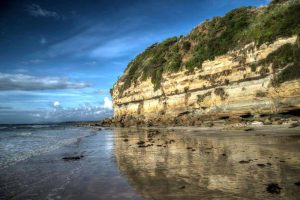
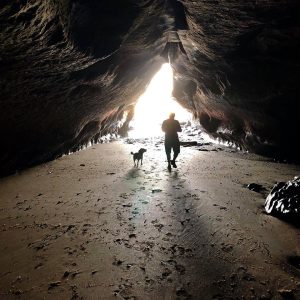

Continuing our winter journey, we find ourselves at Fossil Bluff, a globally recognised geoconservation site nestled in Wynyard, along the north west coast. This area holds significant geological importance with its sandstone cliffs, etched with the imprints of ancient history dating back to the Early Cretaceous period – a time when the thundering footsteps of dinosaurs echoed through the land.
The sandstone and mudstone layers of Fossil Bluff are approximately 115 million years old. These rock formations have acted as nature’s time capsule, preserving the fossilised remains of prehistoric marine creatures. As you touch these fossils, you’re connecting with a past that is over 250 million years old – a rare opportunity to grasp the immensity of geological time with your own hands.
The geological lineage of Fossil Bluff finds its brethren in Maria Island on the east coast of Tasmania, both harbouring sedimentary rocks brimming with fossils. However, Fossil Bluff brings this extraordinary experience closer to those traversing the North Coast. The fossil records unearthed here have not only piqued the interest of paleontology enthusiasts but also offered invaluable insights into our planet’s fascinating prehistoric past.
Beyond the fossil-rich cliffs, you’ll find nearby beaches beckoning you with their pristine waters and golden sands. These are ideal spots to relax and reflect on the extraordinary journey you’ve just taken through deep time, offering a tranquil conclusion to your adventure at Fossil Bluff. Don’t miss this chance to touch the ancient past and witness the slow, yet persistent, dance of geological forces that have sculpted our world.
Boat Harbour: A Winter’s Beach Haven
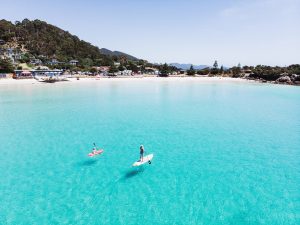


Not far from Fossil Bluff, the quaint coastal hamlet of Boat Harbour awaits, ready to welcome you with open arms. As you approach, you’ll be greeted by a sight that appears to have been lifted straight from a glossy travel brochure – crystal-clear turquoise waters dancing under the sunlight, bordered by dazzling white sands. It’s a tranquil seaside town that’s perfect for swimming, snorkelling, or simply soaking up the serenity of this charming locale. If you’re lucky, you might even spot a pod of dolphins making a playful appearance in the surf!
Boat Harbour is not just a delight for the senses, but a feast for the intellect as well, especially if you have a penchant for geology. This coastal idyll owes its spectacular beauty to a symphony of geological processes that have unfolded over millions of years. The stunning coastline has been sculpted by a fusion of tectonic uplift and the erosive forces of wind and waves, all set against a backdrop of ancient metamorphic rocks and granite intrusions.
But the beauty of Boat Harbour goes deeper than surface level. The striking turquoise hue of the water stems from the reflection of sunlight off the white sandy seabed, creating a breathtaking panorama that’s as fascinating below the surface as it is above. It’s a little piece of East Coast paradise tucked away on the North Coast. The rare combination of azure waters and stark white sands makes Boat Harbour an irresistible attraction, a postcard-perfect getaway that’s sure to enthral even the most seasoned of travellers. So, ready to dip your toes into this unique paradise?
Sisters Creek: Winter Woodlands & Beach Walks
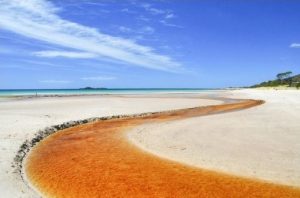
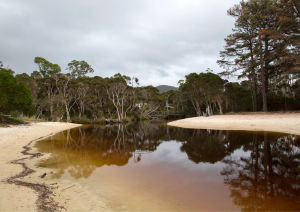

A stone’s throw east of Boat Harbour lies the enchanting realm of Sisters Creek. This rural nook is a picture-perfect snapshot of Tasmanian country life, with its undulating hills and thriving patches of native bushland. It’s a serene spot that captivates visitors with its subtle charms and tranquil ambiance.
A unique feature of Sisters Creek is the waterway that carves its way through the landscape. Locals affectionately refer to it as “Coke Creek,” a nickname that hints at the water’s intriguing colouration. As the creek meanders through terrain abundant in organic matter, the water becomes infused with tannins. These are natural plant polyphenols that leach into the water as the organic material decays, staining the creek a distinctive tea-like hue. This natural occurrence is quite a spectacle and mirrors the processes that give certain teas, wines, and fruits their particular shades.
This brown creek, lovingly known as “Coke Creek,” meanders its way to a gorgeous beach. It’s here where a charming bridge stretches across the water, providing a peaceful spot to soak in the serene rural landscape. Sisters Creek is a paradise for walkers, offering numerous trails that meander through the area’s unique blend of bushland and coastal scenes. Let the adventures unfold!
Montezuma Falls: The Cascade of Winter


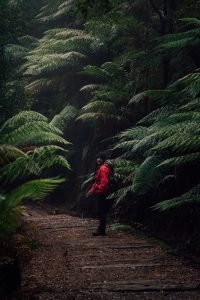
This is your chance to venture to Montezuma Falls – the highest waterfall in Tasmania. Nestled near Rosebery on the west coast, these falls are a stunning testament to the region’s abundant rainfall and the transformative power of water. Over countless years, the relentless flow of water has sculpted a deep gorge into the landscape, cleaving through layers of volcanic and sedimentary rocks. The result is a spectacular waterfall that plunges 104 metres into the gorge below.
The journey to Montezuma Falls is an adventure in its own right. A comfortable 10-kilometre walk, suitable for most fitness levels, will guide you through dense rainforest vegetation, where you’ll be immersed in a world of verdant greenery and the soft patter of raindrops on leafy canopies. The trail carries whispers of the past, taking you past remnants of historic mining infrastructure, providing a touch of cultural history to complement the rich geological journey.
At the heart of this rainforest trek is a thrilling suspended bridge that hangs dramatically above the cascading waterfall. Feel a rush of adrenaline as the bridge sways gently under your feet, offering a breathtaking view of the thundering waterfall. If you’re an off-road enthusiast, you’ll be pleased to know there are 4WD tracks that present an alternative way to delve into the area’s astounding beauty.
Edge of the World: The Solitude of Winter
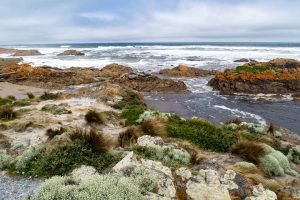
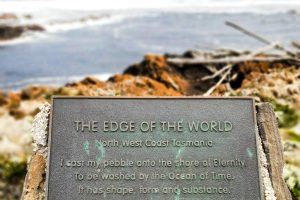

At the conclusion of our awe-inspiring journey, we land at the rugged coastline known as the Edge of the World, specifically at Gardiner Point in Arthur River. Celebrated as one of the wildest places on Earth, this dramatic destination will lead you right to the brink of the vast Southern Ocean, offering an experience that truly encapsulates the feeling of standing at the edge of our world.
This stretch of coastline is a testament to the raw power and beauty of nature. Here, the relentless Southern Ocean crashes against the land with a ceaseless rhythm, carving significant geological features in the process. This dance of water and wind over millions of years has etched the ancient bedrock into breathtaking landscapes, creating a living masterpiece that reveals the constant progression of geological processes.
Standing on this precipice, the poetic resonance of the name “Edge of the World” is unmissable. As one of Tasmania’s westernmost points, Gardiner Point earns its evocative name from its geographical location. Look out upon the infinite expanse of the Southern Ocean, and realise that the nearest landmass to the west is South America, an astonishing 15,000 kilometers away. In fact, the sea west of Tasmania holds the distinction of being the longest uninterrupted expanse of ocean on the globe. This humbling realisation underscores the planet’s vastness and our small but meaningful place within it.
Gardiner Point, the Edge of the World, is not just a destination, but a monument to our planet’s enormity and grandeur, offering a perspective that is truly enlightening.



Each location in our journey has offered unique charms and natural wonders – from the ethereal echoes of Devil’s Gullet, the prehistoric treasure trove of Fossil Bluff, the postcard-perfect Boat Harbour, the tannin-infused waters of “Coke Creek” in Sisters Creek, the majestic Montezuma Falls hidden within a lush rainforest, to the awe-inspiring expanses of the Edge of the World. Each location is a testament to Tasmania’s West and North West Coast’s raw, untamed beauty. Pack your adventurous spirit and discover these magical spots that truly make Tasmania a paradise on Earth!

